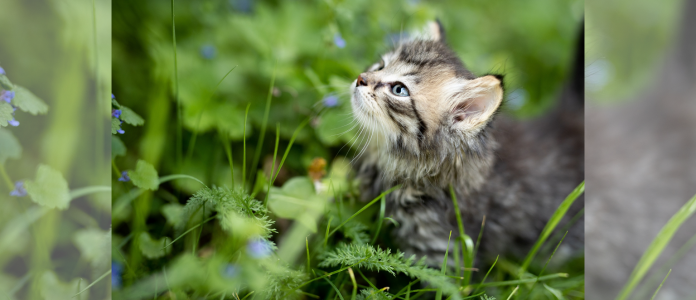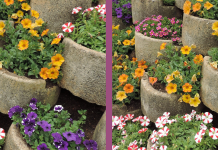Cats do roam, some more than others. Its an instinct that causes cat owners endless anxiety and sometimes heartbreak.
But there is another challenge. As living spaces get smaller, and more people move into security estates, cats have less space too. It can cause conflict because cats are no respecter of man-made boundaries.
More and more cat owners are opting to border their properties with electric fencing that will deter but not kill cats or set up a catio (enclosed outdoor space accessed from the home).
Securing the premises is only the first step. The next is to create a cat-friendly environment that will meet the cat’s need for stimulation such as height, comfort, concealment, and cat-safe plants they can nibble on or use for purging hairballs, such as cat grass or other grasses.
Multi-level living

Cats love being able to survey their surroundings and especially if they are enclosed. Build platforms or perches for them at various levels. Use the sawn off branches of trees to make a structure that they can climb up and look out. It also acts as a natural claw sharpener.
Hide and seek

Cats are explorers and a stimulating garden is one full of bushy plants that attract insects they can hunt or provide hideaways where they can curl up and take a nap. Avoid plants with milky sap, like poinsettia, that are toxic, as are azaleas, oleander, lilies, chrysanthemum, peace lilies, and philodendrons.
If the garden is small, consider plants in large pots. Cats like to curl up in pots under the shade of foliage with just enough sun filtering through. Use a leafy mulch to protect the base of the plants and also provide a soft cushion for the cats.

Before choosing the plants, check if they are safe for cats. There are long lists of safe and or toxic plants on the internet.
Some indoor/outdoor plants that are safe for cats are chlorophytum (Hen and chickens/Spider plant), haworthia succulent, peperomia, calathea, Areca palm (bamboo palm) ponytail palm , birds nest fern, Fittonia, and prayer plant (Maranta).
Pamper your cats

Catnip is the biggest treat you can give adult cats. When rubbed, the leaves release a fragrance like cat pheromones that produce a euphoric effect. Because cats tend to roll on it, plant it out of reach in a hanging basket or in a container and put an old birdcage over it. It is not addictive, and the green leaves are good for them.
Many cats enjoy nibbling Catmint (Nepeta mussinii). It does affect some cats but not to the same extent as catnip (Nepeta cataria). It acts as a digestive. Catmint is a beautiful garden plant with aromatic grey leaves and spikes of mauve flowers.
Grass is essential

Watch how cats enjoy a grassy patch. They roll in it, nibble the blades, stalk one another and play. Find a small sunny area where you can plant some grass.
It has another function, and that is to act as a digestive, because it can prompt vomiting which clears the stomach of fur, feathers or bones that irritate the digestive tract.
If you don’t have space for a patch of grass, here are two alternatives that can be grown in pots.
- Cat grass (Dactylus glomerata) is a cool season perennial grass, with grey-green leaves, and grows into a dense tussock about 20cm tall. It helps regular bowel movements and digestive problems.
- Chlorophytum saundersiae is a good alternative to cat grass and is not poisonous to pets. Cats like to eat the leaves for digestion. It grows in sun or shade and creates a soft meadow effect. It also grows well in containers.

As a final consideration, be aware of sun and shade and ensure a good balance of both. If an area is too hot, use 60 percent shade cloth to break the harsh sun. There should also be a good air flow to keep the cats cool.






